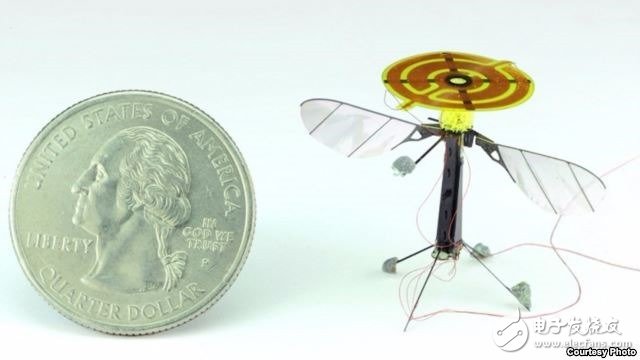Micro drones are currently facing a problem: how can we have enough energy to fly more durable?
A research team at Harvard University has or has found a solution. They built a drone called RoboBee, which weighed the same as a bee, about 100 micrograms, and was only a little bigger than a bee. This type of micro drone can save energy by "perching", and they "have" like a bee or other insect flying from one plant to another.

Such drones can perform missions in locations that are unreachable to humans or in locations that are dangerous to humans. Researchers say the potential use of such drones includes search and rescue operations or surveillance activities at the affected locations.
“Many applications for small drones require them to stay in the air for longer, but unfortunately small drones often consume a lot of power. So we hope to find ways to make small drones Flying more for a longer battery supply," says Harvard University researcher Moritz Graule.
In order to allow the drone to have a "perching" function, the researchers sought answers from the insect world.
“There are many species that use the function of habitat to save energy, but the habitat of insects is not suitable for a clip-sized drone, because this habitat requires a complex movement system.â€
So the research team used a method of electrostatic attachment, which is like a balloon that is attached to a wall. However, the static electricity on the balloon will eventually disappear, so the researchers added an electrode plate to the drone to generate enough energy to ensure the continuity of the electrostatic adhesion function.
When RoboBee flies, it can be attached to the surface of most objects, such as glass, wood or leaves. When the drone is to "have", the electrode plate is energized, and when the drone is about to take off, the electrode plate is powered off.
"The biggest advantage of this system is that it does not cause drone imbalance when the drone takes off, which is crucial for our small drone," Graule said.
The current UAV's electrodes are mounted on the top of the drone, which means that current UAV prototypes can only be inhabited under the ceiling or under the eaves. Researchers say they will make this drone in any location in the future.
“It’s equally difficult to develop a device landing system, but the results of the experiment show that this approach really helps the micro drone to save power.â€
Because RoboBee can fly to many locations that humans can't reach, its future applications will be very broad.
One of the potentials is to use this miniature drone to inhabit the room and quietly collect information, and then sneak away when no one is found.
Biopsy Needle,Trocar With Detachable Handle,Multi Segment Application,Puncture Of Vertebral Body
Dragon Crown Medical Co., Ltd. , https://www.dragoncrownmed.com
